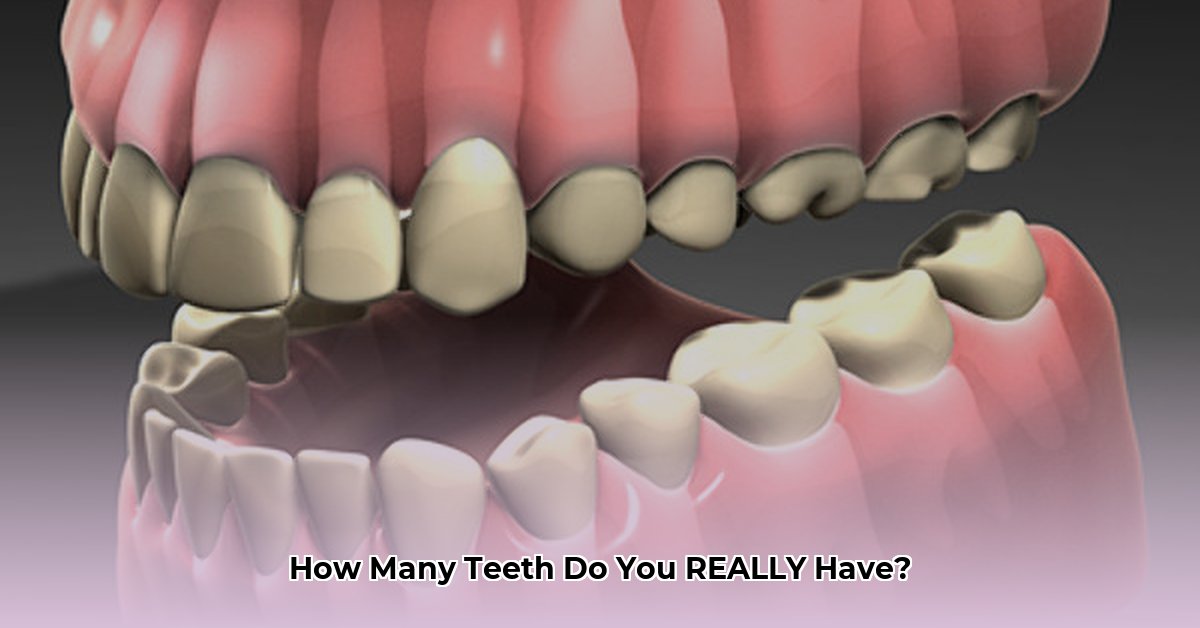Let’s explore the fascinating world of teeth! From those first adorable baby teeth to the full set of adult chompers, this guide covers everything you need to know about the types of teeth, their functions, and the journey from a child’s first tooth to a healthy adult smile.
Understanding Your Teeth: A Journey Through Life’s Stages
Our teeth are essential for much more than just a dazzling smile. They play a vital role in chewing, speaking clearly, and even shaping our faces. Let’s delve into the different types of teeth and how many we have at various life stages.
Baby Teeth: The Foundation of a Healthy Smile
A baby’s first tooth is a momentous occasion! These primary teeth, often called “baby teeth” or “milk teeth,” are crucial for a child’s development. They act as placeholders, guiding the permanent teeth into their correct positions. A full set of baby teeth typically totals 20, neatly divided into four quadrants within the mouth.
| Type of Tooth | Number per Quadrant | Total |
|---|---|---|
| Incisors (for nibbling) | 2 | 8 |
| Canines (for tearing) | 1 | 4 |
| Molars (for grinding) | 2 | 8 |
| Total Baby Teeth | 20 |
Most babies start teething around 6 months old, though this can vary. The first teeth to emerge are usually the bottom front incisors. By age 3, most children have a full set of 20 baby teeth.
Adult Teeth: The Permanent Set
Around age 6, children begin losing their baby teeth, making way for permanent teeth. This transition continues gradually into early adulthood. Most adults have 32 permanent teeth, also distributed across four quadrants.
| Type of Tooth | Number per Quadrant | Total |
|---|---|---|
| Incisors (for biting) | 2 | 8 |
| Canines (for tearing) | 1 | 4 |
| Premolars (for tearing and grinding) | 2 | 8 |
| Molars (for grinding) | 3 | 12 |
| Total Adult Teeth | 32 |
Wisdom Teeth: The Unpredictable Arrivals
Wisdom teeth, or third molars, typically emerge between ages 17 and 25. However, not everyone has enough room for them. Impacted wisdom teeth, those trapped beneath the gums, can cause pain, infection, and crowding. Extraction is often recommended in these cases. Some individuals may never develop wisdom teeth, while others may have fewer than four.
The Role of Each Tooth: A Dental Dream Team
Each type of tooth has a specialized function:
- Incisors: These front teeth are sharp and chisel-shaped for cutting food.
- Canines: The pointed canines are designed for tearing and gripping.
- Premolars: These teeth have a dual role, assisting with both tearing and grinding.
- Molars: Located at the back of the mouth, molars are powerful grinders that pulverize food.
Variations and Anomalies: The Unique Nature of Smiles
While 32 is the typical number of adult teeth, variations exist. Hypodontia (fewer teeth) and hyperdontia (extra teeth) can occur due to genetic or environmental factors. Ongoing research continues to explore the complex interplay of genes and environment in tooth development.
Caring for Your Teeth: A Lifelong Commitment
Regardless of your age or the number of teeth you have, proper care is essential. Regular brushing, flossing, and dental checkups are crucial for maintaining healthy teeth and gums.
Here’s a summary of the tooth count at different life stages:
| Type of Teeth | Children (Primary Teeth) | Adults (Permanent Teeth) |
|---|---|---|
| Incisors | 8 | 8 |
| Canines | 4 | 4 |
| Premolars | 0 | 8 |
| Molars | 8 | 12 (including wisdom teeth) |
| Total | 20 | 32 |
Consult your dentist for personalized advice and to address any concerns about your oral health. A healthy smile is a happy smile, and it’s an investment worth making!
- Shop Bento Box for Sale To Find Your Ideal Lunch Container - December 6, 2025
- Lunch Box That Fits Bento Box Neatly for Daily Use - December 5, 2025
- Japanese Lunch Bag Does Double Duty as Bento Carrier and Tote - December 4, 2025










